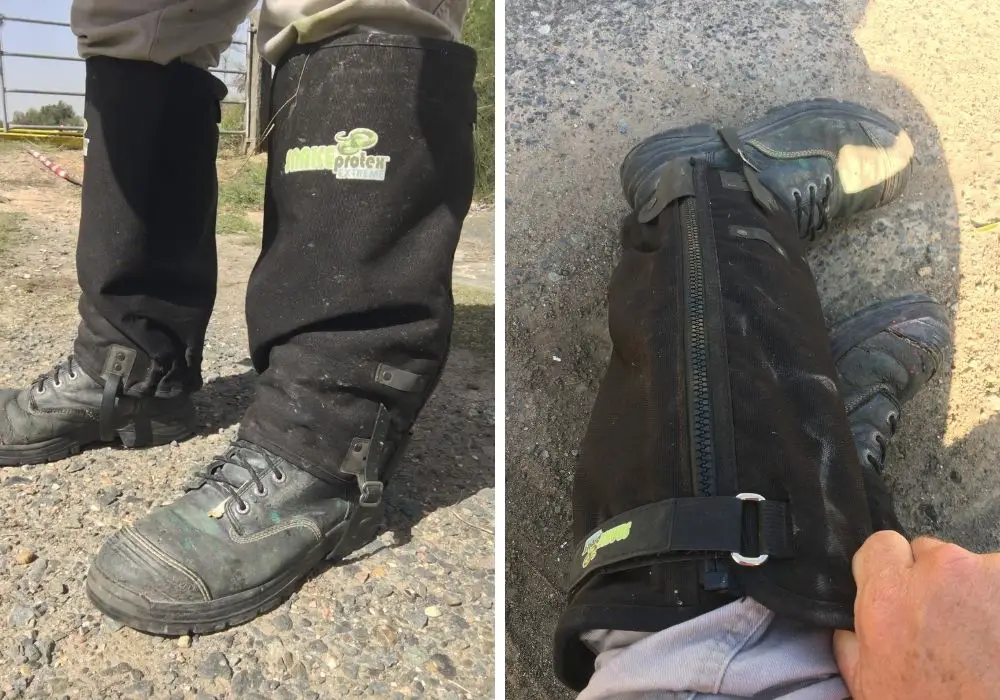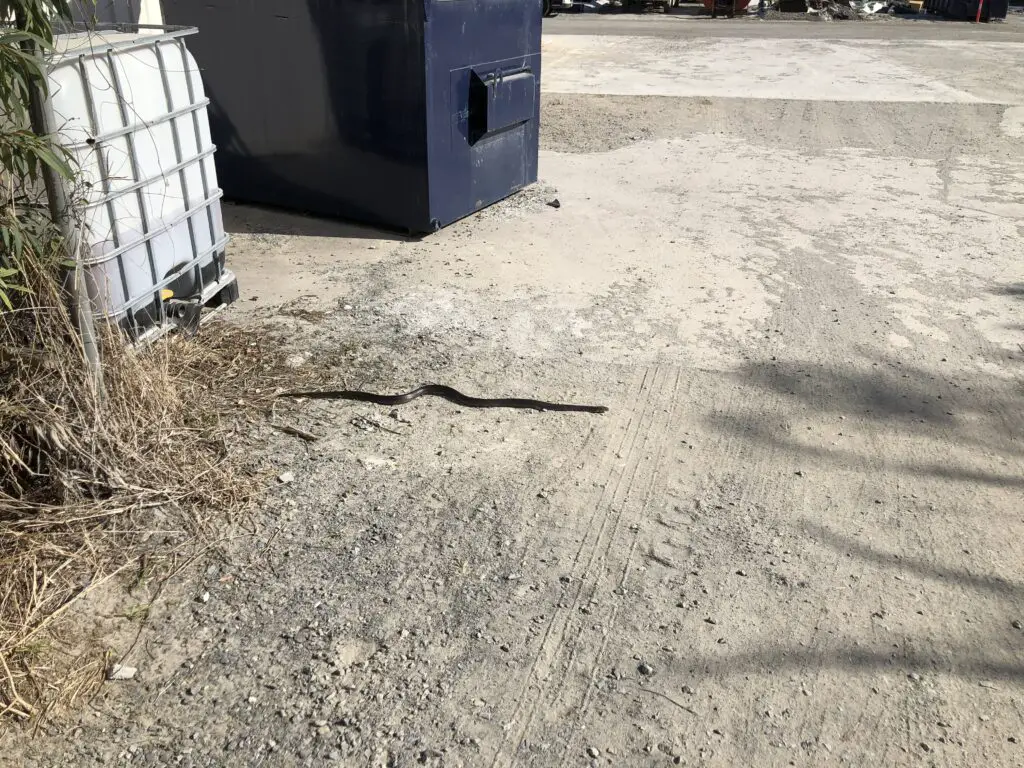The 5 ways to protect yourself from getting bitten from a snake bite are:
- Wear closed in boots that are ankle-high, long pants and snake gaiters,
- Stick to the defined trails and tracks where possible,
- If you do see a snake, never go to touch it and give it plenty of space if you have to go around it, and definitely don’t try to attack it or capture it,
- If you are going to an area where there is a chance that snakes will be there, have an emergency plan in place,
- If possible don’t hike or work alone
Surveyors spend a lot of time walking and hiking through bushland and deserts, areas that aren’t populated and that are a high risk of having venomous snakes. Being aware of the types of snakes in an area, the best ways to prevent snake bites and how to treat snake bites is something that you should be aware of.
5 Ways To Prevent Snake Bites
1. Wear Appropiate Clothing and PPE
Snake bites usually occur on the lower part of your leg, some basic items of clothing you can wear to minimise the risk of a snake bite are:
- Wear closed in footwear that doesn’t have any mesh panels that a snake could bite through. Even better would be to wear steel-capped work boots. Ideally, your shoes or boots will be ankle-high to provide more protection.
- Wear long loose-fitting pants. If you have loose-fitting pants on and a snake tries to bite you, the snake may just bite the air between your pants and leg. Tight-fitting pants will increase the likely hood of a snake making contact with your skin.
- If you are regularly in the outdoors you should consider buying a good pair of snake gaiters. Snake gaiters are an extra layer of protection that goes from your ankle up to below your knee. My preference for snake gaiters are SnakeProtex (read my review here), these are well tested and proven to reduce the risk of snake bites. Check out my gaiter buyers guide to help you make your decision.

2. Walk On Defined Trails
You are just as likely to see a snake on a trail as you are in the bush, however, you will at least SEE a snake on a trail. Snakes can conseal themselves quite well in the bush. They can often be found under logs and rocks.
3. Never Touch A Wild Snake
Unless you are a trained snake handler and there is a reason to be picking up a snake, its best if you never touch a snake. Being wild animals they are unpredictable and the risk of getting bitten is very high.
If you do see a snake on a trail consider if you really have to go around him, if you do try and give as wide a berth around the snake as possible.

4. Have An Emergency Plan In Place
If you will be hiking or walking somewhere where there is a risk of snakes, you need to have an emergency plan in place.
Depending on your situation your emergency plan can include:
- Emergency contact person and number,
- Tell your emergency contact where and when you are going, and make a plan to touch base ever one hour,
- Can you rely on mobile reception? If there won’t be any reception you could look into investing in a device such as a sat phone or a Spot Tracking device, and
- Are you carrying the necessary medical equipment to treat a snake bite? You should at least have a bandage in case of a snake bite.
5. Don’t Walk Or Hike Alone
Sometimes someone isn’t always available to go for walks or hikes with you. Ask yourself if you can just wait until you have someone else to go with.
Conclusion
Whatever you do don’t let the thought of a snake bite stop you from walking or hiking some trails or working in the bush. Snake bites are extremely rare and deaths even less so. The last thing a snakes wants to do is get into a fight with you!
If you equipment yourself with the propper clothing and have a good pair of gaiters (check out my buyers guide) then you really have nothing to fear.
